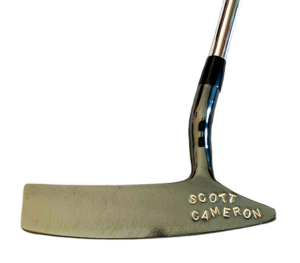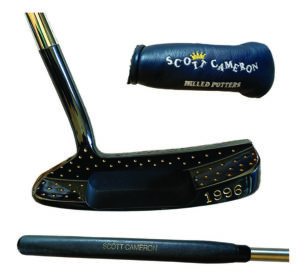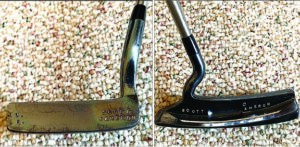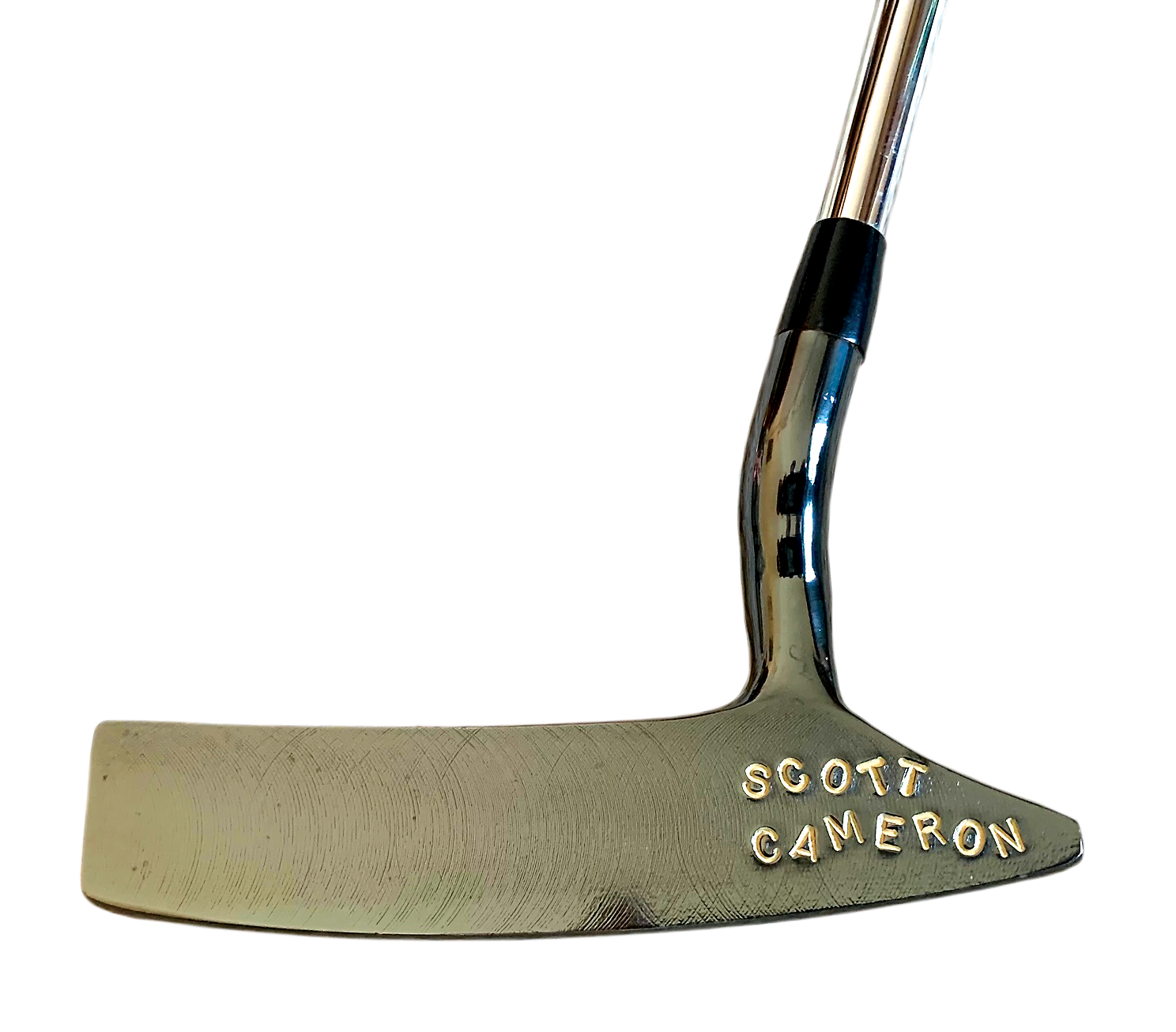
Bill Vogeney continues his series of articles on collecting Scotty Cameron putters.
By Bill Vogeney
The Golf, Winter 2023
While there are very few if any avid golfers who don’t know of Scotty Cameron and his putters, there are also very few avid golfers who know and understand what a “Scott” Cameron putter is.
When Cameron decided to make putters for the PGA Tour in late 1990, he crafted them by hand from a solid billet block of carbon steel using a Bridgeport vertical mill, fine tuning with a grinding wheel to get the shape just right. He was known as “Scott” at the time, thus these original Cam- eron putters were stamped (not engraved) “Scott Cameron.” Today, these putters are referred to as handmade Camerons. The process was very laborious: one of Scotty’s first brochures touted that he would often spend up to 20 hours to finish one of these Scott Cameron putters. While his original putters were all Scott Cameron models, within a year more of his putters made for the tour started life on a CNC (computer numerically controlled) milling machine to generate the basic shape, with Scotty doing the fine shaping by hand. Ultimately, Cameron decided the models he made that originated on the CNC would be known as “Scotty” and the handmade models would be marked “Scott.” Scott Cameron handmade putters were produced mostly between 1991 and 1996. The few exceptions are stamped with the year they were made, between 1997 and 2000.
Confusion still exists 30 years later. Many “Scotty” putters made for the tour, or the high-end collector market, show Scotty’s name crafted by hand with metal stamps to leave an impression in the metal. The fact that Scotty’s putters designed for the retail market have markings engraved by machine will confuse many novice collectors when faced with a putter stamped by hand. Hand stamped does not mean handmade, but all legitimate Scott Cameron putters will be stamped and not engraved.
(If the putter has been stamped, the letters are somewhere between slightly crooked to what Scotty calls “dancing letters.” There is metal that is pushed up around the stamps – called mushrooming. If a putter has been engraved, the letters are typically perfectly straight and uniform.)
Scott Cameron putters can vary quite a bit, as they were often made to order for tour pros and later a few very serious collectors. Most are very similar blade styles, either with a flat topline or one flared upwards towards the toe. Some have a cavity or pocket in the back, but most do not. Models that don’t follow this basic style are very rare. Scotty estimates he only made about 600 Scott Cameron putters total – so they’re hard to find anyway. These include models inspired by the Wilson 8802. Handmade 8802-style Cameron putters have almost earned “holy grail” status for the right collector: I’ve seen about 10 in 32 years of collecting.
Scott Cameron putters that have been “dolled up” are even more desirable. You might find one with “snow” on the flange, created with a dot punch to produce little indentations that were paint filled to reduce glare in the sun. Another rare feature is what Scotty calls the “brushed flange,” which seems to have been inspired by the hand-hammered marks found on so many old T.P. Mills putters.
What is a handmade worth? Just like any collectable golf club, it depends on condition, originality, different features such as those mentioned above, rarity of the design, the presence of verifiable tour initials, and whether the putter has an original Scott Cameron leather grip and Scott or Scotty headcover. If you find a plain, very well-used example it may sell for as little as $1,250 to $1,500. If you find a plain one in near mint condition, you should be able to double that value. A putter with snow or a brushed flange will likely be valued at least $500 to $1,500 more. A unique model, especially an 8802 style, could be worth another $1,000. Add the original leather grip (not a newer Cameron grip that dates from the Titleist years) and you can easily add $250, along with another $100 to $250 if the putter has the original cover.

All that said, having owned about 70 Scott Cameron putters over the years, having bought my first one in July 1993, I have learned that values realized at auctions or private sales vary widely. There are a limited number of truly serious collectors looking for these. If you have the right putter, sell it at the right time, and have multiple people looking to buy the right putter, the price could approach $10,000. If the timing is wrong, even with the right putter, it might not realize $3,500 at sale. Collecting can be a fickle thing, as all of us know.
If you happen to find a Scott Cameron putter, feel free to contact me for my opinion on value at vogeygolf@gmail. com. Even more important, I think I’m a good sounding board for whether to have a putter like this restored. That’s a topic for another article.


Bill Vogeney is the co-author of the 2001 book, The Art of Putters, the Scotty Cameron Story. He has been collecting golf clubs for more than 40 years and Cameron putters since 1992. A 35-year executive in financial services, Bill’s first collectible club was the Designed by Arnold Palmer, given to him by his first boss in high school. He also collects MacGregor woods and irons, along with golf course architecture and private club history books

